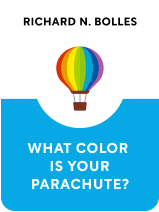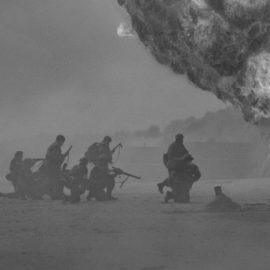

This article is an excerpt from the Shortform book guide to "What Color Is Your Parachute?" by Richard N. Bolles. Shortform has the world's best summaries and analyses of books you should be reading.
Like this article? Sign up for a free trial here .
What are the parachute colors in What Color Is Your Parachute? Do parachute colors represent something?
What Color Is Your Parachute? is a book title based on a joke. There are no parachute colors to categorize yourself into, but the Parachute method for finding a job is a useful strategy.
Keep reading for a discussion of the traditional approach to finding a job versus the method using Parachute colors.
Parachute Colors and Finding a Job
There are two approaches to finding a job: the traditional approach and the Parachute colors approach, which is far more successful. No matter which approach you take, you should spend as much time searching for a job as you would working a full-time job.
The Traditional Approach
The traditional approach involves searching the job market to find a job by using one, some, or all of the following ten techniques. They’re listed in order of worst to best:
- Search for job postings online. This works 4% of the time in most fields. In finance, health care, engineering, or tech, it’s around 10%.
- Send your resume to employers. This works 7% of the time.
- Get help from an employment agency. This works between 5-28% of the time, depending on the quality of the agency.
- Respond to ads in trade or professional publications in your industry. This works 7% of the time.
- Join a job-search support group. This works 10% of the time, but these groups have value beyond helping you find a job—they provide emotional support.
- Go to a government employment office. This works 14% of the time.
- Go to union hiring halls or other locations where employers look for temporary help. This works 22% of the time.
- Ask people you know about job leads. This works 33% of the time. Interestingly, you’re more likely to get a job through an acquaintance than a close friend. This is because you and your close friends know the same people and probably have the same information. An acquaintance, on the other hand, knows people you don’t and might work in a different field.
- Physically go to an office/factory. Visit an employer’s place of business and ask if they’re looking for anyone. This approach works best with companies that have fewer than 25 employees. This works 47% of the time.
(Note: the author writes that the figures and stats above are derived from a mix of studies and his own impressions.)
If you’re looking for something more temporary, you can join the gig economy. List your house on Airbnb, drive for Uber or Lyft, and so on.
The Parachute Colors Approach
Unlike the traditional approach, which starts by studying the job market, the parachute approach begins with studying yourself (via your flower diagram). If you’re starting with the job market, the best you can hope for is to confine yourself to an existing job description. The parachute approach helps you find a job where you can truly be yourself.
Advantages of the Parachute Approach
The parachute colors approach has several advantages over the traditional method:
- It works 86% of the time, which is 12 times better than your chances of getting a job if you just send out a resume.
- It leads to you finding your dream job, rather than just any job.
- It’s motivating because the payoff isn’t just a job, it’s a job you love. Persistence is very important to the job-searching process, and you’ll be more persistent if you’re motivated.
- It’s fun because you get to imagine your dream life.
- It teaches you to describe yourself in different ways, which allows you to enter multiple job markets. The self-inventorying you did in the flower exercise involves changing your identity from a person who has a job (you’re a teacher) to a person who has experience and skills. Retraining would only prepare you for one market.
- It allows you to specifically and effectively communicate what kind of a job you want while networking.
- It allows you to rise to the top of the competition. You’ll be able to articulately describe yourself and your skills and traits.
- It allows you to approach companies even if they haven’t posted a job. Often, in the back of their minds, employers want to hire someone but haven’t found the time to start the process. When they encounter a conveniently skilled person such as yourself, they might create a job for you.
- It allows you to solidify your desire for a career change. You might have been reluctant to change careers because you thought you had to retrain, but the flower exercise probably revealed that several of your skills are transferable. If you do need more training, you might be able to learn enough on your own or do a short-term program such as a technical/vocational school.
- It allows you to recognize unemployment as an opportunity to reflect on your life. Self-inventorying is full of self-reflection.
- It will force you to use mindfulness, which will improve your decision-making.

———End of Preview———
Like what you just read? Read the rest of the world's best book summary and analysis of Richard N. Bolles's "What Color Is Your Parachute?" at Shortform .
Here's what you'll find in our full What Color Is Your Parachute? summary :
- How to not just find a job, but find a job you love
- Why traditional resumes don’t find you the right job
- The 7 steps to identifying your ideal career






